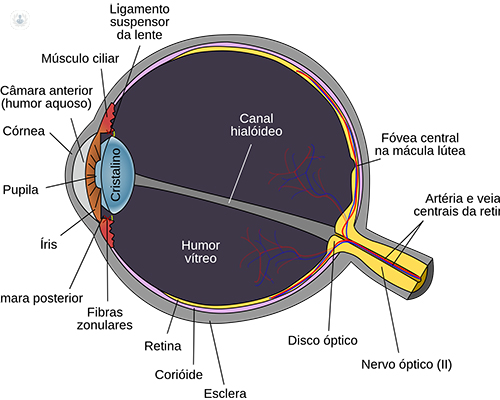Why undergo a vitrectomy?
Written by:Vitrectomy is an intraocular surgery in which the vitreous is removed. It is done either because it is opacified (eg by bleeding), or to take samples of it and to analyze them (for example, in case of infections, inflammations or intraocular tumors), as well as to allow access to the retina and intervene Surgically over it.
It is usually done by entering into the eye by three small pathways. For one of them introduces the instrument that allows us to eliminate the vitreous, and which we know as vitreotome or vitrectomo; On the other, a light probe to visualize the inside of the eye; And by the third, a continuous infusion of serum.
Applications of vitrectomy
Vitrectomy is applied in very varied pathologies; The most frequent are:
- The presence of blood within the eye, common in diabetics and other vascular pathologies, in trauma or retinal tears.
- Retinal detachments. In this case it is usually associated with intraocular injection of some type of gas or silicone oil.
- Treatments of some diseases of the macula, such as epimacular membranes, macular holes or tractions on the macula.
- Intraocular infections, to remove the vitreous, to cultivate it and to facilitate the diffusion of antibiotics within the eye.
- In case of complications of cataract surgery, such as dislocation of the cataract or intraocular lens inside the eye.
- To treat some vascular abnormalities of the retina.
- To eliminate vitreous opacities that can seriously impair vision.
- To take vitreous or retinal samples in case of intraocular tumors.

Risks of vitrectomy
There are certain risks, common to all eye surgeries, which if they occur can be very serious. For example, intraocular infections, intraocular bleeds that are very serious and difficult to control, significant increases or decreases in intraocular pressure, etc. Although these complications are very rare.
Among the most frequent complications is the subsequent formation of a cataract, especially in people over 50 years. So much so, that in these patients ophthalmologists already warned in advance that although the surgery is satisfactory, it is common for a few months or a year to have to operate the cataract.
Another complication that may appear is a retinal detachment in the postoperative period. However, this complication is less frequent since the surgical technique has improved in recent times; The incisions through which we enter the eye are becoming smaller and the time of surgery has shortened significantly with respect to a few years ago.
In general, we achieved a satisfactory and uncomplicated surgical result in 90-95% of cases.
Recovery after vitrectomy
Since vitrectomy is used in very different pathologies, the time to recover the vision and the amount of vision that is recovered varies greatly depending on the original cause that requires vitrectomy.
In general terms, and if we forget very serious and infrequent pathologies (such as intraocular infections or intraocular tumors, in which the vision can seriously affect), we could say that when we treat macular conditions the vision is usually recovered Quickly, and when we treat retinal detachments depends on the type of gas or silicone oil we use. We use a type of intraocular gas that takes 3 to 4 weeks to disappear, another type of gas that is usually removed between six and eight weeks and, finally, if we use silicone oil we would have to think about intervening again to get it out of the eye Months after the first operation.
Vitrectomy, one and no more?
Vitrectomy can be performed several times in the same eye. The ideal, however, would be that with a single intervention the patient's pathology would be solved.
In general, the more times the same eye is operated, the chances of surgical success and the final visual outcome may be worse.


